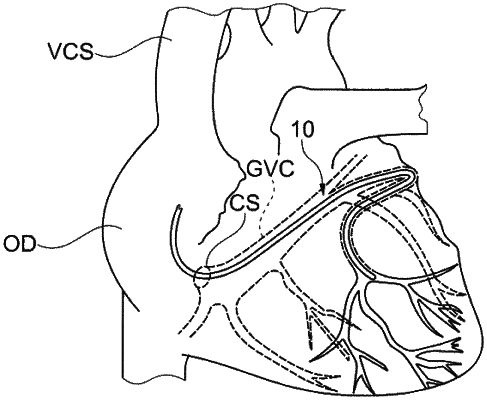| CPC A61N 1/362 (2013.01) [A61M 25/0021 (2013.01); A61N 1/056 (2013.01); A61N 1/0565 (2013.01); A61N 1/372 (2013.01); A61M 2025/0042 (2013.01)] | 20 Claims |

|
1. A system implantable into a coronary venous network of a heart, comprising:
a microcable made of a conductive material; and
a catheter comprising:
an insulating material;
a hollow tube forming an internal lumen, wherein the catheter receives the microcable in the internal lumen;
a proximal portion having a first inner diameter;
a distal portion having a second inner diameter including a plurality of lateral windows formed in the wall of the hollow tube; and
a cone positioned between the proximal portion and the distal portion, the cone configured to transition the catheter from the first inner diameter to the second inner diameter;
wherein the second inner diameter is less than the first inner diameter, such that the clearance between the internal lumen and the microcable in the distal portion is less than the clearance between the internal lumen and the microcable in the proximal portion;
wherein the region of the microcable positioned in the distal portion is non-insulated and forms a stimulation electrode;
wherein the catheter is adapted to be moved on the microcable so as to modify the position of the plurality of lateral windows, and thereby modify the position of the stimulation electrode, relative to the microcable.
|